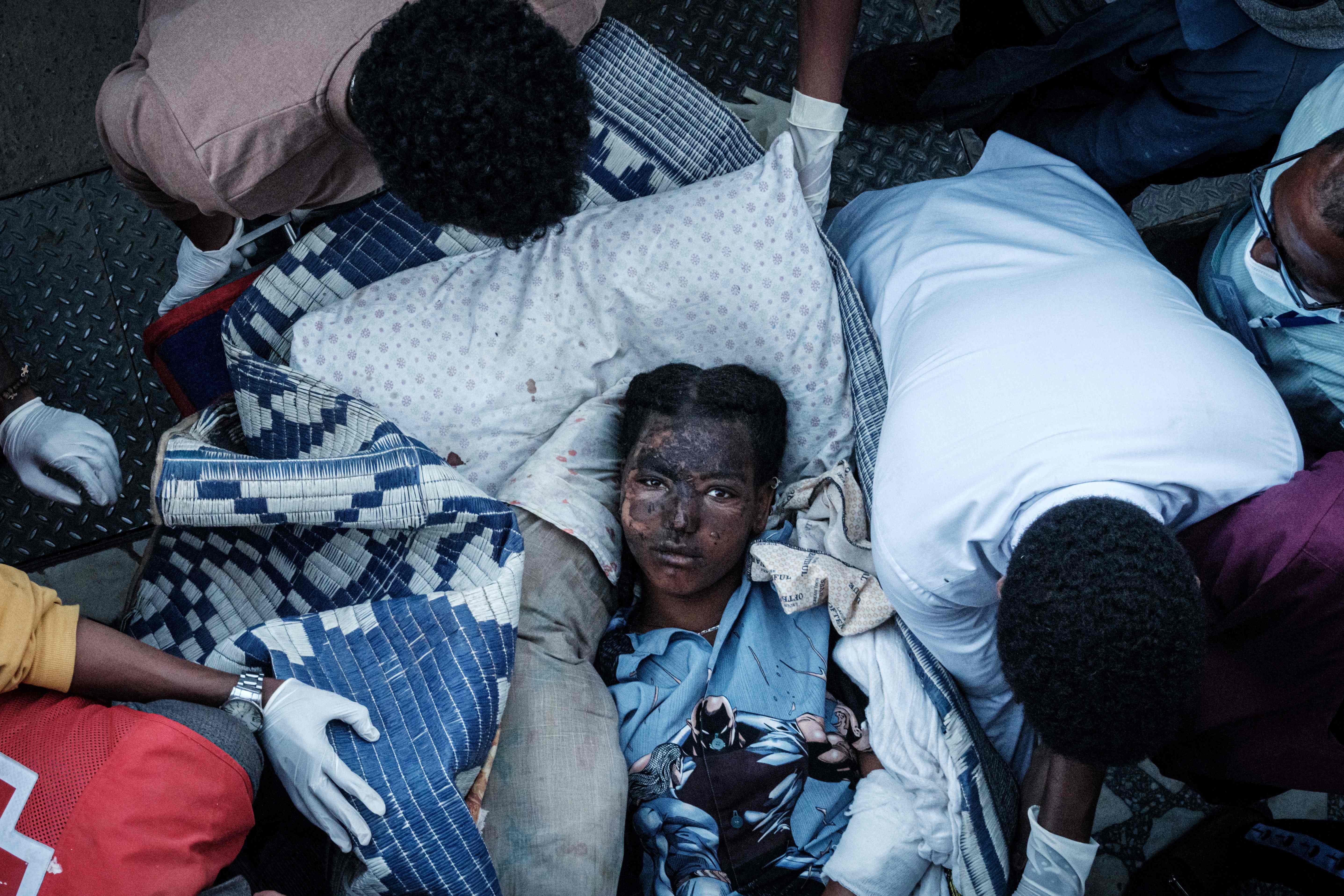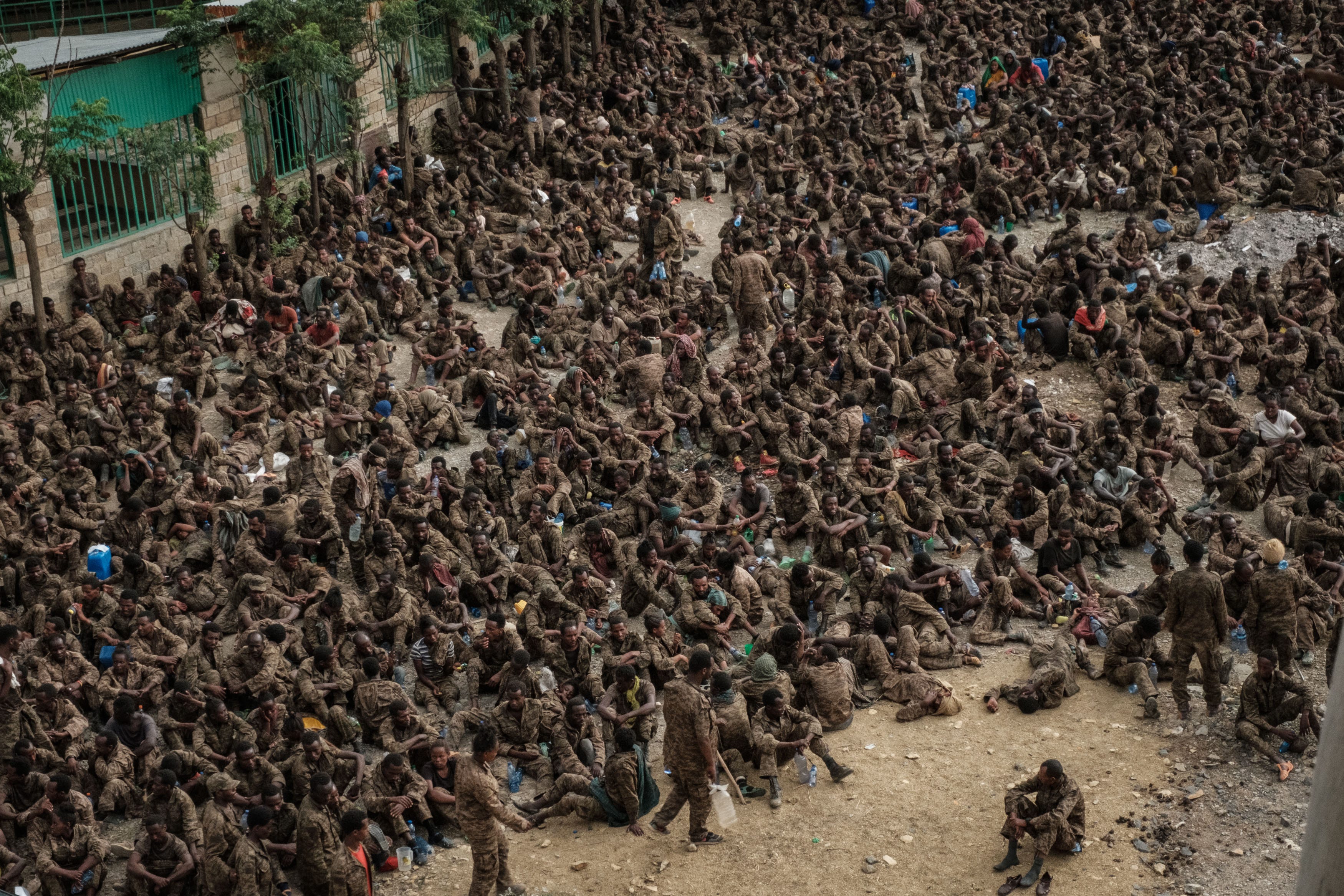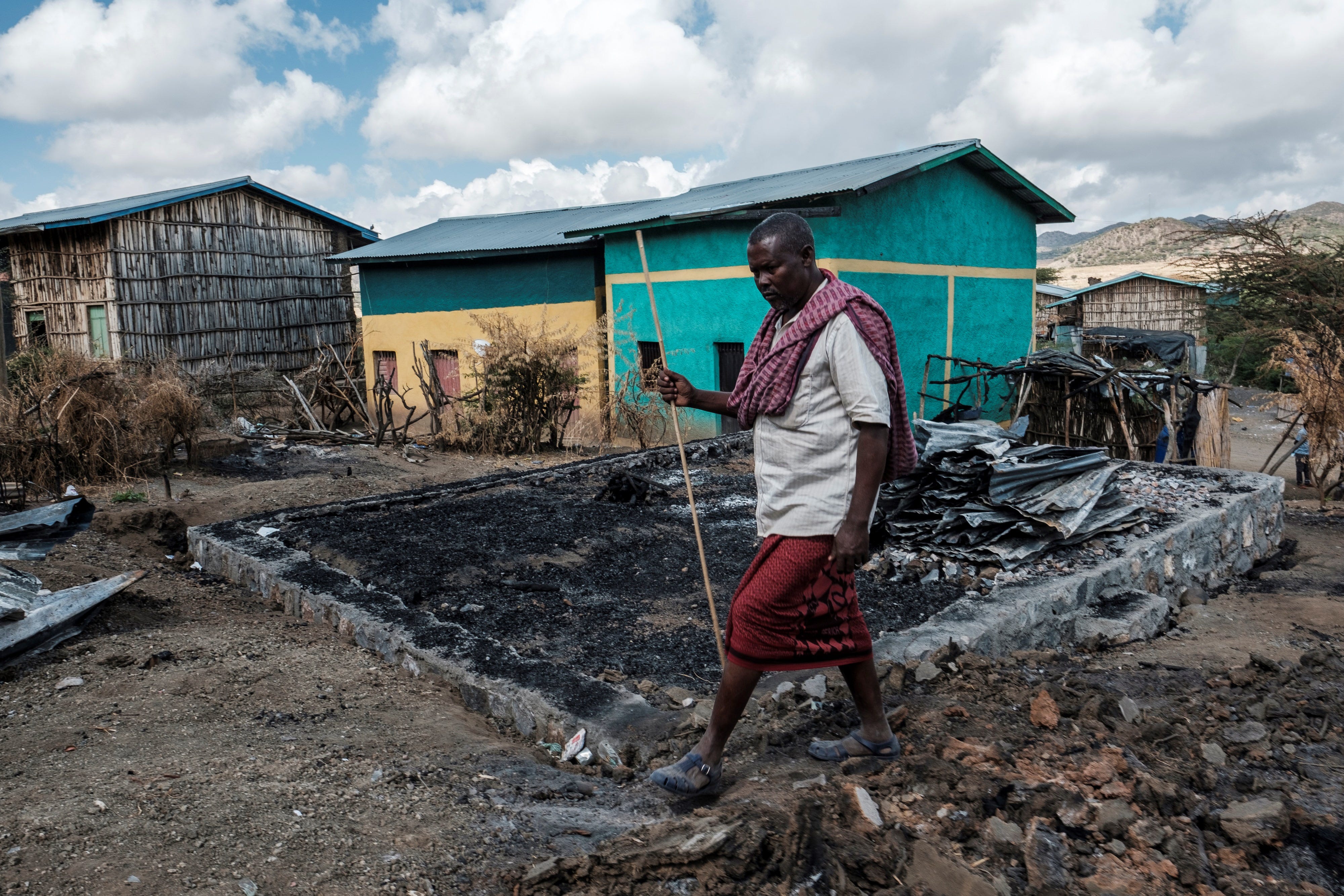According to UNHCR, the UN Refugee Agency, more than 40,000 refugees have crossed into Sudan from Ethiopia’s Tigray region since fighting started in early 2020. Shown are refugees in Hamdayet and Um Rakuba, Sudan filmed November 26 — 27, 2020. UNHCR via Storyful
Tigray, Eritrea and Ethiopia's 2-year-long civil war has killed more people than the war in Ukraine, yet nobody's talking about it.
According to UNHCR, the UN Refugee Agency, more than 40,000 refugees have crossed into Sudan from Ethiopia’s Tigray region since fighting started in early 2020. Shown are refugees in Hamdayet and Um Rakuba, Sudan filmed November 26 — 27, 2020. UNHCR via Storyful
No working ambulances for a population of more than 5.5 million. No banking services. Hundreds of thousands killed by fighting and famine. A near-total military siege that has all but cut off essential supplies and forced families to stay in touch by word of mouth or through handwritten letters.
Russia's invasion of Ukraine has preoccupied U.S. and international policymakers and military planners since early 2022. There has been intense focus on the humanitarian impact, from displaced people to allegations of war crimes, from energy prices to questions around global security, including whether President Vladimir Putin would dare use nuclear weapons.
But there is another, bigger and deadlier conflict in which over the past two years the abject horrors of war have been all but hidden to the West because of a combination of a border blockade, a communications blackout, complex regional dynamics and few visible sustained signs of meaningful engagement from Western capitals.
This conflict, a civil war, is being fought in Tigray, an ancient kingdom in northern Ethiopia, on the Horn of Africa.
Tigray has been under assault from Ethiopian forces led by Prime Minister Abiy Ahmed, Eritrean forces led by President Isaias Afwerki and various militias accused of extrajudicial executions, sexual violence and indiscriminate shelling. There has been widespread destruction of civilian hospitals, schools, residences, factories and businesses. Experts say Eritrea is involved in the conflict partly out of a desire to reassert itself on the regional stage and a result of long-running animosity against Tigrayans. The Ethiopian government and Tigrayan forces recently signed an agreement laying out a roadmap for a peace deal, but experts are unsure to what extent it is meaningfully being observed.
How many lives have been lost in Tigray?
An estimated 383,000 to 600,000 civilians died in Tigray between November 2020 and August 2022, according to Professor Jan Nyssen and a team of researchers at Ghent University, in Belgium, who are authorities on Tigray's geography and agriculture. The estimates represent deaths from atrocities, lack of medicines and health care, and hunger. Estimates for the numbers of combatant deaths on all sides start at 250,000 and range up to 600,000.

Many are dying from starvation and famine.
The U.S. State Department estimated in September 2021 that more than 5 million people required humanitarian assistance and at least 1 million were living in famine-like conditions. According to Tim Vanden Bempt, a researcher affiliated with Ghent University, humanitarian food aid has not covered those needs. A U.N. World Food Program survey in June noted that 65% of the population had not received food aid for over a year.
Tigray's population has been facing a famine because of the conflict. Because of the blockade and for security reasons, food supplies have not been able to reach millions. Since the signing of the peace accord, the U.N.'s World Food Program has said its trucks are now starting to deliver aid to Tigray. But it's not clear at what pace or whether acute shortages of essential supplies are reaching those most in need.
Norwegian Kjetil Tronvoll, an expert on Ethiopia who has studied the wider region for decades, says that in many respects the conflict is a "perennial" one in Ethiopian history. "How strong should the center be?" he said, referring to the Tigrayan decision to revolt after Ahmed sought to centralize Ethiopian government power at the expense of regions like Tigray. A joint investigation by the Ethiopian Human Rights Commission and the U.N. Human Rights Office has concluded that militias loyal to Tigray have also likely committed war crimes during the conflict.

Tronvoll said the November signing of the peace accord between Ethiopia’s federal government and the Tigray People’s Liberation Front, which controls much of Tigray, was a "significant and great step forward toward a durable peace. But we are not there yet. This is just the beginning."
Hospitals and medical services are in disarray.
"We can't even communicate with our families because no cellphone services or landlines are functioning," Abenezer Etsedingl, a Tigrayan doctor who coordinates emergency medical services for the region's 40 hospitals, told USA TODAY in early November. He said that at least 12 of the hospitals have fallen to Ethiopian and Eritrean armed forces over the past two years.
Etsedingl is not able to communicate with staff at any of the hospitals without actually going to visit them. Before the war broke out, Tigray had about 270 ambulances. Now there are just eight. With no available fuel, none are on the road. Etsedingl said many patients are taken to hospitals by horse-drawn carts. Once there, if they do get a diagnosis, there are no medicines to treat them. Maternal mortality rates have have shot up 800%, he said.

Etsedingl spoke to USA TODAY via WhatsApp, the messaging platform. As a government employee, he had rare access to a satellite phone that gave a patchy connection to the internet. His is the only Tigray hospital, in the city of Mekelle, that has one. It was not possible to independently verify Etsedingl's claims.
Who's fighting who in Tigray?
The Ethiopian government, led by Ahmed, is supported by Eritrea’s leader, Afwerki, and his army. They have been fighting the Tigray People’s Liberation Front (TPLF), Tigray's ruling party. Ethiopian National Defense Forces (ENDF) has 300,000 troops, according to Tronvoll. Eritrea's military is called the Eritrean Defense Forces, or EDF. Tronvoll says it has 250,000 troops. Another militia, the Amhara regional forces, are also fighting against the Tigrayan Defense Forces.
The Tigray People’s Liberation Front (TPLF) led by Debretsion Gebremichael and its army of 250,000 troops is supported by several other militias, the largest of which is called the Oromo Liberation Army, or OLA, led by Kumsa Diriba (aka Jaal Marroo), which has 150,000 troops. Another militia called Somali State Resistance supports Tigray.
Tronvoll says the above are estimates and could fluctuate by 50,000 in either direction. He says they represent the total number of fighting forces rotated in and out of the conflict.

How many people live in Ethiopia, Eritrea and Tigray?
The Tigray region’s population comprises 4.9% of Ethiopia’s 117 million people. Ethiopia is the oldest state in sub-Saharan Africa and the only state in Africa that has never been colonized. It has more than 2,000 years of history. It is where the oldest biblical texts have been found. Various forms of Pentecostal Christianity are widely followed in Ethiopia, including by Ahmed, who uses religious terminology in his speeches to explain his own power. He claims he has a divine mandate.
Ethiopia is an "extremely religious society," says Tronvoll. He says this devotion is equally shared among the nation's Muslims, Orthodox Christians and Pentecostal Christians.
Ethnic Tigrayans are chiefly Orthodox Christians adherents (Ethiopian Orthodox Tewahedo). They are mainly farmers and the largest industry is agriculture. The main language in Ethiopia is Amharic. In the Tigray region, Tigrinya is spoken. These two languages are closely related. Both are known as Semitic languages. Tigrinya is not too different from what's spoken in Eritrea.

Who was involved in the latest peace deal?
The warring factions in Ethiopia signed a peace deal aimed at drawing down the fighting and restoring services and aid to Tigray. Here are the key figures in the negotiations:
The African Union, made up of 55 states, is mediating the peace talks. Former Nigerian president Olusegun Obasanjo is acting envoy for the talks. Getachew Reda is the representative for Tigray People’s Liberation Front (TPLF), and Redwan Rameto is representing the Ethiopian government. The Biden administration's special envoy for the Horn of Africa, Mike Hammer, is also involved.
With virtually every part of Tigray cut off from every other, Etsedingl, the Tigrayan doctor, said he didn't know if the agreement to end hostilities, described by Ahmed as "monumental," would mean a breakthrough on the ground.